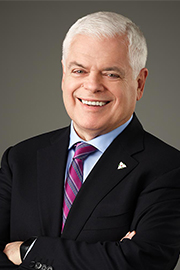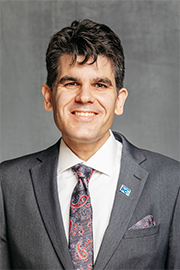- Mar/30/23 4:10:00 p.m.
Further debate?
- Hear!
- Rabble!
- Mar/30/23 4:30:00 p.m.
I want to thank the member for her speech this afternoon, and I’d like it if she would explore, expand on, for a moment, what she has found in her riding when it comes to the impact of the refusal on the part of this government to actually raise ODSP rates.
In my riding, we’ve seen tremendous misery, tremendous pain and suffering. My guess is that you’ve had a similar experience in your riding, but if you can take a moment, expand and talk about some of those stories, I think we would all benefit.
- Hear!
- Rabble!
- Mar/30/23 4:30:00 p.m.
So that was a long question, but you know what I’ll focus on? Ontario Place. I just want to give a shout-out to Ontario Place for All and Architectural Conservancy Ontario and also some of my colleagues who are calling for a value-for-money audit of the Conservative government’s plan to hand over a massive chunk of publicly owned Ontario Place to a for-profit place—where is it?—based out of Austria.
I don’t have a problem with investment, but I think we need to invest in Ontario first. And Ontario Place and this government’s ill-thought-out plan for Ontario Place is a best example of the way in which they prop up their buddies—heck, foreign corporations now—as opposed to propping our community up. We don’t need a $600-million private spa courtesy of the government. What are we going to call it? Austria place, or the place formerly known as Ontario Place? Let’s bring the community in to consult about Ontario Place, a place many of us in this House still enjoy to this day.
What are people facing? They are literally facing being unhoused. Some of them are literally considering medical assistance in dying. And some of them are simply just walking around feeling so distraught that they cannot afford the basics.
And I never forgot this woman. We’re still in touch, actually. I’m going to see her next month and I’m going to tell her that you mentioned ODSP, because that will matter to her. She’s very happy when we mention it and she’s thrilled to hear that we want to at least double the ODSP/OW rates.
I mean, any of one of us as MPPs, how would you feel if you got a letter tomorrow saying “Get the hell out of your residence; it’s being demolished. Thank you very much”? This is not fair. What do you tell the senior who has been living at 55 Brownlow for 40-odd years? Where is she supposed to go? She was shaking, speaking to me last night. Where is she supposed to go? As I said last night, maybe Queen’s Park should open its doors at night. I hear they have a lot of space here at night for those who are unhoused.
- Hear!
- Rabble!
- Mar/30/23 4:30:00 p.m.
Thank you, member. It’s interesting hearing the government opposite talk about our concerns with investment. We are very much in support of investing in Ontario businesses, small businesses, ensuring government money goes to support Ontario businesses.
I have a question for the minister—not yet—for the member for Toronto–St. Paul’s: When you look at the budget, what did you see that’s going to help the renters in your riding? I know 60% of people in your riding rent. What’s in this budget for them?
- Hear!
- Rabble!
- Mar/30/23 4:30:00 p.m.
Thank you for the presentation from the member of the opposition. But this budget is not only about spending; this budget is about building Ontario’s economy today and tomorrow. So it is a budget to also attract investment.
GM: They have more than a $2-billion investment to protect thousands of jobs. Tesla is manufacturing the equipment to help the batteries for the future. Honda is investing $1.4 billion to make hybrid vehicles. Ford is making a $1.8-billion investment to produce EVs. Toyota has invested $1.4 billion to make vehicles, including hybrids. GM is building Canada’s first-ever full-scale EV manufacturing plant. And Volkswagen in St. Thomas is also building their first-ever overseas battery cell plant here in Ontario.
So I want to ask the member from the opposition why her presentation is only about spending, but not attracting any investment into our province?
- Hear!
- Rabble!
- Mar/30/23 4:30:00 p.m.
Questions?
- Hear!
- Rabble!
- Mar/30/23 4:30:00 p.m.
I’d like to ask the member opposite: When our government took power in June of 2018, I think we all know in the House that the previous Liberal government had spent recklessly for a decade and a half, and we were the most indebted sub-sovereign government in the entire world. That’s a fact. We had an enormous debt in the province, and our government has responsibly moved back to lowering the deficit year after year, and we’re now actually projecting next year to be in a slight surplus and a surplus thereafter.
I understand you may not agree with us on some of the content of the budget, but in general, does the NDP and yourself, the member opposite, support the economic path in terms of balancing the budget for the people of Ontario?
- Hear!
- Rabble!
- Mar/30/23 4:30:00 p.m.
I want to thank the member for St. Paul’s for your passion for those in your riding; I know I certainly have many in mine as well. Last Saturday, I was speaking with the CEO of Hôtel-Dieu Grace Healthcare, Bill Marra, and he actually had some kind comments about the budget. He said, “The proposed investments in children’s mental health, adult mental health and addictions and supportive housing opportunity is noteworthy. By focusing on early intervention and prevention, the Ontario government’s leadership is demonstrating a commitment to improving health care outcomes for all Ontarians.”
Given the contrast in comments between what you shared and what I’m hearing in my community, I’m wondering if you could elaborate a little bit as to the kinds of investments that you would prefer to see in the budget.
- Hear!
- Rabble!
- Mar/30/23 4:40:00 p.m.
First of all, I’ll be sharing my time with the great member from Barrie–Innisfil.
I’m sure most believe I’m going to speak about help for businesses, specifically our manufacturing tax credit, but there are four main points I really want to speak about. Being a small-business owner, I really do want to speak about the business side of things, but there are so many good things in this bill that I want to chat about four main points.
Last week, our government released the 2023 Ontario budget, Building a Strong Ontario. It is a plan that navigates ongoing global economic uncertainty, while laying a strong fiscal foundation for future generations, including my own children. It is our government that is building to ensure this province is the leader not only in Canada, but across the world.
Our government’s plan is taking significant actions to drive growth by building Ontario’s economy, such as building highways, transit and infrastructure projects, as well as training workers, keeping costs down for those who need it the most and providing better services to make life easier for people.
One area of the budget that I believe needs to be highlighted is our government’s commitment and investment of $68 million this year in a new program that connects youth in the child welfare system with additional services and supports they need to prepare for and succeed after leaving care. The Ready, Set, Go program launches April 1 and will provide youth transitioning out of care with the life skills and supports they need to pursue post-secondary education, skilled trades training and employment opportunities.
Under the new program, children’s aid societies will begin focusing on helping children plan for their future at an earlier age. Starting at age 13, they will begin learning practical life skills and planned educational goals. At age 15, the emphasis will expand to financial literacy and preparing for the workforce, including managing personal finances, setting up a bank account, grocery shopping, resumé-building, and how to access social services and other supports.
The Ready, Set, Go program will also allow youth to remain in care until the age of 23, up from the age of 21. Monthly financial support will also increase to provide youth a better quality of life and safer housing opportunities, so they can focus on their studies or working. Youth who will remain in care at the age of 21 will now receive $1,000 per month. Youth will also be able to work up to 40 hours per week at Ontario’s minimum wage without affecting their financial supports. Those pursuing a post-secondary program or training in skilled trades and apprenticeships will receive an additional $500 a month starting at the age of 20.
The Ready, Set, Go program was developed with input and advice from former youth in care and child welfare advocate partners, and is informed by research. Our government listens. These changes were part of Ontario’s plan to transform the child welfare system and help children’s aid societies better prepare youth leaving care.
Speaker, this investment will transform lives. Hearing the testimonies of people such as Ingrid Palmer, chair of the Child Welfare Political Action Committee Canada and former youth in care, “By implementing the Ready, Set Go framework, the Ontario government is beginning to break down the complex barriers faced by youth from care who experience disproportionate risks and challenges throughout their lifetime. The Child Welfare PAC fully endorses this approach, which incorporates a data-driven system and a better-resourced, graduated introduction to adulthood. With multiple pathways to brighter futures and improved outcomes, this framework will help us support our most vulnerable youth and provide them with the tools they need to succeed.”
Or Carina Chan, lawyer and former youth in care, who also states, “As a family/child protection lawyer and former youth in care, I understand how challenging it can be for a young person to abruptly transition out of the child welfare system. The Ready, Set, Go program gives youth a longer runway and key resources to help them thrive and reach their full potential as young adults. In addition to making it easier for youth in care to access educational employment opportunities, this framework will also allow policymakers and service providers to measure the impact of the program and to develop further initiatives that address the needs of youth in care.”
Speaker, those are two people who have lived through youth care, and they are highly on board with our new system that we’ve set up.
As part of the 2023 budget—this one excites me more than most—Building a Strong Ontario, our government has invested $3.1 million for the Ronald McDonald House Charities in Ottawa, which will enable them to officially break ground this year and get started on a much-needed expansion of 22 more bedrooms. As Christine Hardy, CEO of Ronald McDonald House Charities Ottawa, said, “Receiving this incredible $3.1-million grant from the government of Ontario will enable our Ronald McDonald House in Ottawa to officially break ground this year and get started on a much-needed expansion of 22 more bedrooms. We have been operating since 1984 with just 14 bedrooms. We are always at full capacity and desperately need to grow to reflect the diverse needs of our communities we serve and to reduce our wait-list. When families stay at the house, it is because their child is receiving urgent critical medical care far from home, often for months, and in some cases years at a time. It is my honour to speak on behalf of all Ronald McDonald House Ottawa region families with sick children when I say thank you. Having this kind of recognition from the government of Ontario is truly helping us make room for all families.”
The fact that they’ve had 14 bedrooms since 1984—Madam Speaker, I was one year old at that time, so this is a long-needed expansion of the Ronald McDonald House. I’ve had friends who have had to use their services, and they cannot speak highly enough about them and the pressure it takes off them when their children are sick. This is positive news, not only for my residents of Stormont–Dundas–South Glengarry but also for residents in the north who utilize CHEO for exceptional care.
Our government is hard at work, and this 2023 budget has highlighted just how we are committed to tackling the staffing shortages in health care. I’m a numbers guy, so I’ll share—and probably bore the members with—the stats. We are investing $200 million this fiscal year to expand supports to address immediate health care staffing shortages, as well as to grow the workforce in years to come.
We are supporting up to 3,150 internationally educated nurses to become accredited nurses in Ontario through the Supervised Practice Experience Partnership program. More than 2,000 internationally educated nurses have already enrolled in this program and 1,300 of them are already fully registered and practising in Ontario.
We’re offering up to 6,000 health care students training opportunities to work in hospitals providing care and gaining practical experience as they continue their education through the Enhanced Extern Program. This program has offered these opportunities to over 5,000 health care students already.
Ontario is continuing to hire more health care workers, to ensure everyone can see a trained professional when they need to. Key new investments this fiscal year to build the health care workforce include: $4.3 million to help 50 internationally trained physicians get licensed here in Ontario; $22 million to hire up to 200 hospital preceptors to provide mentorship to newly graduated nurses; and $15 million to help 100 mid-to-late-career nurses continue to be in the workforce.
Speaker, as part of our government’s plan to connect people to care closer to home, the province is expanding the Ontario Learn and Stay Grant to add more health care professionals in underserved and growing communities like my own riding of Stormont–Dundas–South Glengarry. In addition to nursing programs, the grant will now include paramedic and medical laboratory technologist programs in priority communities like my own.
As the province makes it a priority to increase access to doctors and expand undergraduate and postgraduate medical training seats across the province, our government is doubling the previous investment of $42.5 million over two years, with an additional $100.8 million over the next three years to expand and accelerate the rollout of undergraduate and postgraduate seats. This will result in an additional 160 undergraduate positions and 295 postgraduate positions by 2028.
Once again, Speaker, we understand just how important the growing need for mental health and addictions services and programs is in this province. Therefore, Ontario launched the Roadmap to Wellness: A Plan to Build Ontario’s Mental Health and Addictions Systems, to better connect people to mental health services that are convenient for them. Building on this historical investment of $3.8 million over 10 years, the government is providing an additional $425 million over three years, a 5% increase in base funding, mainly to:
—support mental health and addictions services across the province that are easy to access where and when they are needed;
—support children and youth by providing access to mental health and addictions services, primary care and social and community supports;
—maintain supportive housing and services for people living with mental health and addictions challenges as they transition from hospital to the community;
—support children and youth suffering from eating disorders; and
—work with Indigenous partners and communities to support Indigenous people’s access to high-quality, culturally appropriate care.
This investment will provide community-based mental health and addictions service providers funds that are funded by the Ministry of Health.
Camille Quenneville, CEO of the Canadian Mental Health Association of Ontario, said, “The vital structural base funding commitment announced today is the largest by any government for community mental health and addictions care in a decade. It will significantly help community-based mental health and addictions agencies provide high-quality care, retain dedicated and committed staff, and address rising operating costs. The budget is an overwhelmingly positive sign that the government understands the strain our sector is facing as we support Ontarians living with mental health and addictions challenges. It also demonstrates their desire to help the most vulnerable in society.”
Thank you, Madam Speaker.
Report continues in volume B.
- Hear!
- Rabble!
- Mar/30/23 4:40:00 p.m.
A quick response.
The member from Stormont–Dundas–South Glengarry.
- Hear!
- Rabble!
- Mar/30/23 4:40:00 p.m.
When the government member suggests a contrasting comment, I don’t know if he was trying to say politely that I was lying or something of the sort. When I come to this House, I come echoing the voices that I have heard in my constituency and with stakeholders I meet with.
One thing I will tell you that I’ve heard from constituents and stakeholders is that they’re often very intimidated when they’re on Zoom meetings and when they meet with the government. Oftentimes they do have to smile and shake their head and say, “Thank you very much for the pennies you’ve offered us”, but it doesn’t meet—
- Hear!
- Rabble!









